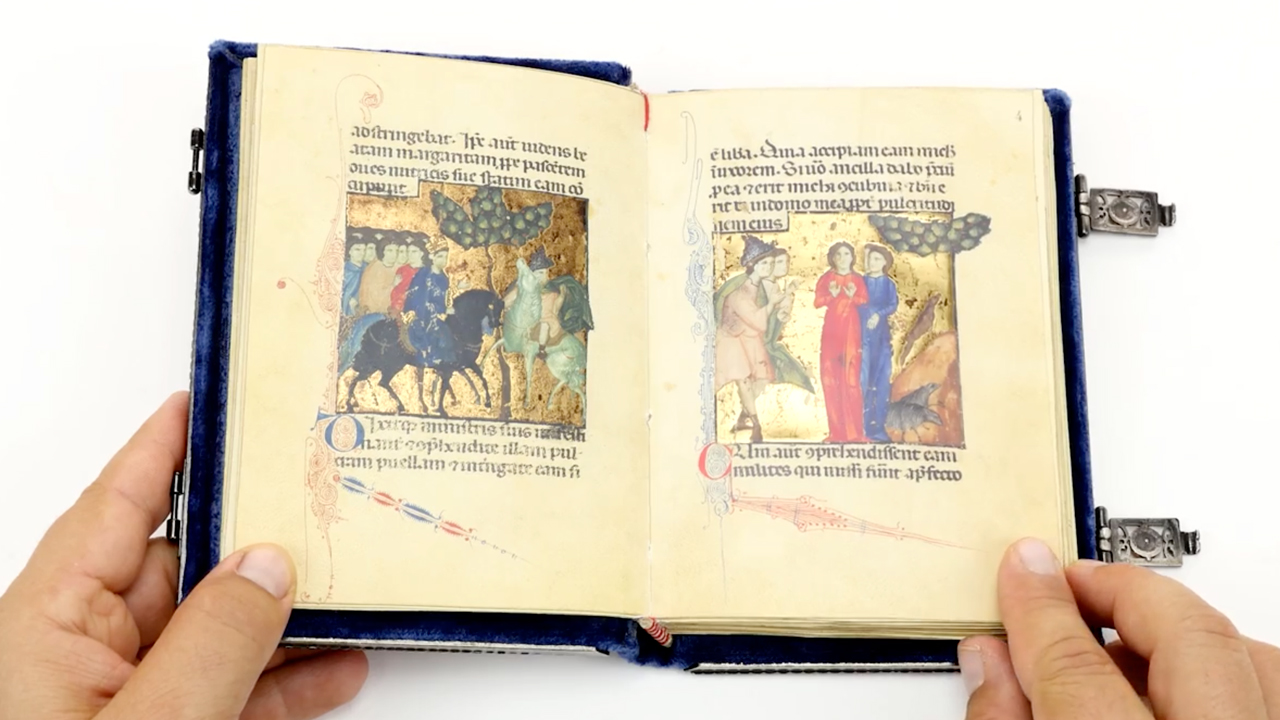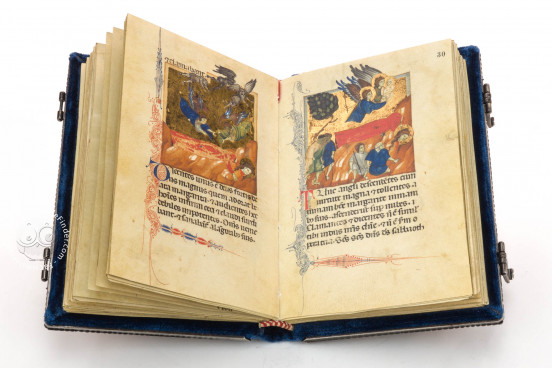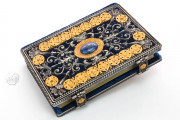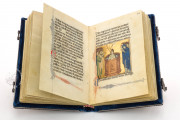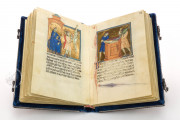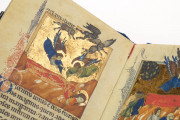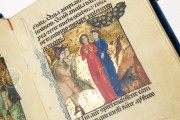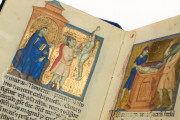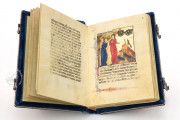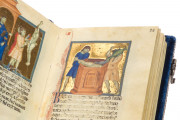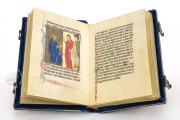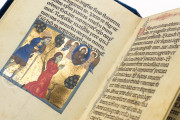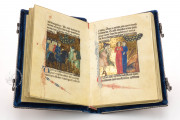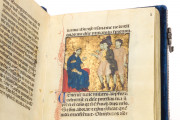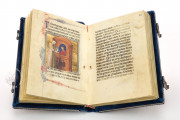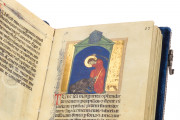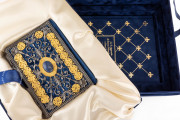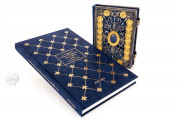Collecting the lives of two women saints, St. Margaret and St. Agnes, this manuscript, preserved in the Biblioteca Riccardiana, consists of two sections that were unified at the beginning of the fourteenth century. Only the life of St. Margaret of Antioch is decorated almost on each page with miniatures that depict the relevant moments of the martyrs' story. This codex is probably one of the most comprehensive representations of the passion of St. Margaret.
The Manuscript's Byzantine and Late Antique Features
Made in Bologna at the end of the thirteenth century, this manuscript of relatively small dimensions is a product of high quality, embellished by thirty-three miniatures, two historiated initials, and filigree initials. The illustrations are a remarkable example of the variety of influences that the illuminators in the Late Medieval Bologna incorporated in their works.
Following a Late-Antique layout, the miniatures occupy only part of the page and are separated from the text by borders that function as frames for the illuminations. Therefore, the sequence of images appears in a continuous narrative, echoing the panel paintings that celebrate the life of the saints in churches.
The background is decorated with gold leaf and shows elements of architecture and landscapes. The refined setting of the pictures finds inspiration in the Byzantine representations of the lives of the saints.
The Devotion of St. Margaret and St. Agnes
The legends of the life of St. Margaret and St. Agnes find inspiration in the Byzantine legends and iconographies of the two martyrs. It is still unknown the reason why the stories of the two saints were unified in one book. The events of their lives may provide some clues: both women attracted the interest of important people and, after refusing their attentions, they both had to endure horrible tortures.
A few aspects of the lives of the two saints might suggest linking the manuscript to some historical figures that lived the experiences that Margaret and Agnes lived. Margaret, daughter of the King of Hungary, Bela IV, has been considered the princess who owned this manuscript.
As a princess devoted to the Christian religion, she has been identified as a possible owner of this book of female devotion. No clear evidence remains of the original patron, but it is more probable that the female figures were unified in one book to refer to the virtue of chastity that both martyrs represent.
We have 1 facsimile edition of the manuscript "Legends of Saint Margaret and Saint Agnes": Leggende di Santa Margherita e Sant'Agnese facsimile edition, published by ArtCodex, 2009
Request Info / Price
